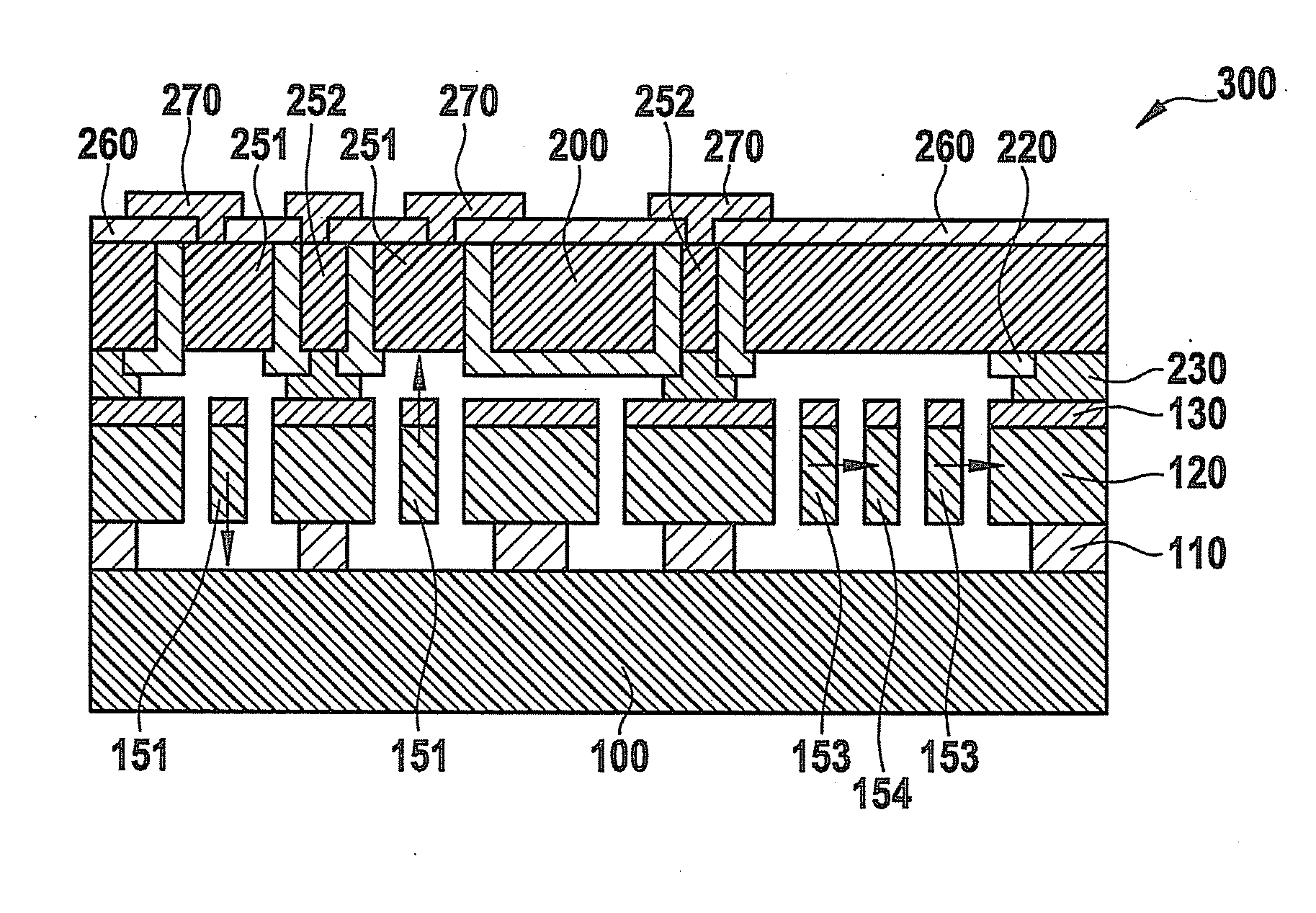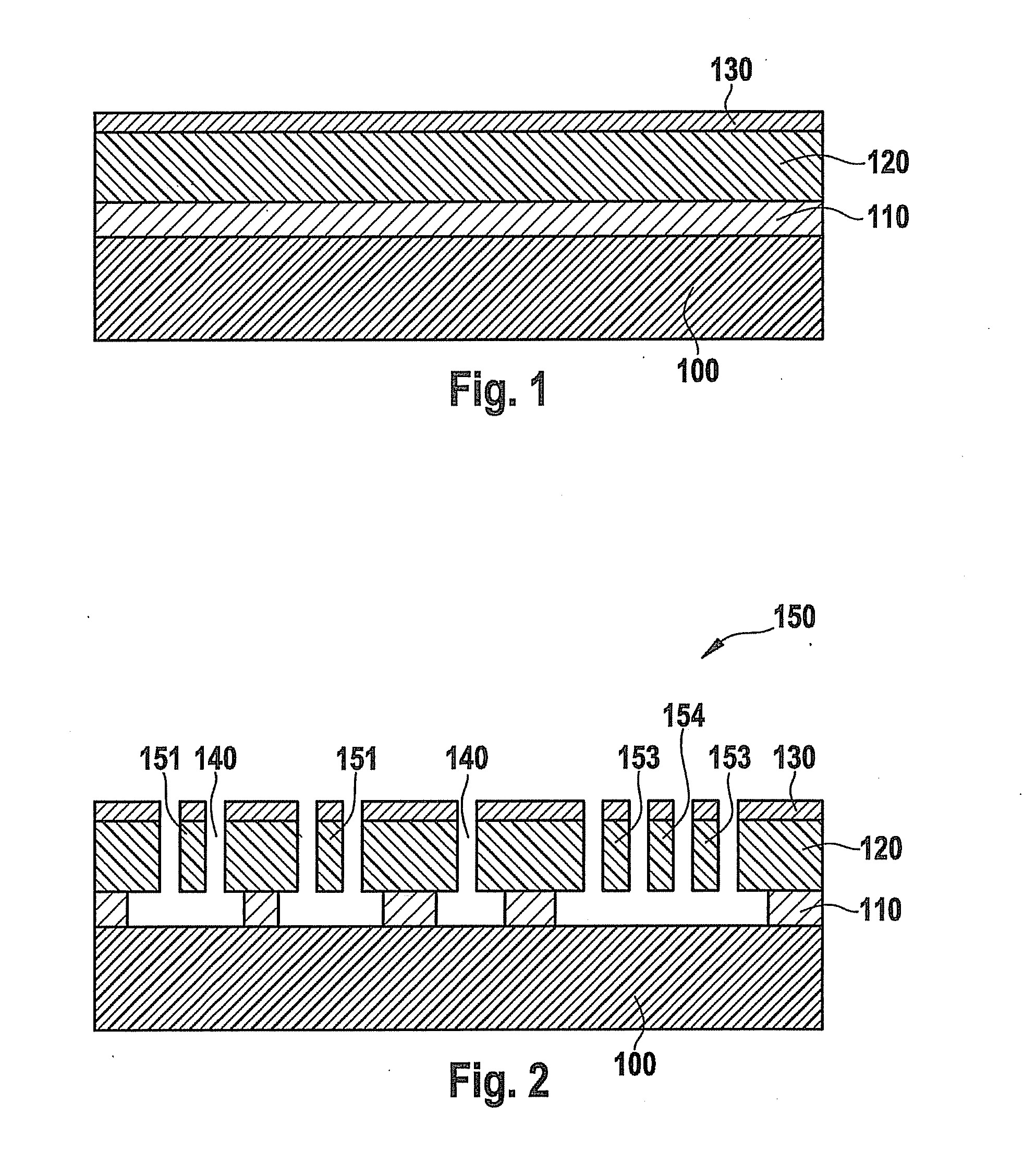Micromechanical component and method for its production
a micromechanical and component technology, applied in the field of micromechanical components, can solve the problems of large surface requirements of components, large number of process steps, and complex methods, and achieve the effect of small size, simple and cost-effectiv
- Summary
- Abstract
- Description
- Claims
- Application Information
AI Technical Summary
Benefits of technology
Problems solved by technology
Method used
Image
Examples
Embodiment Construction
[0022]The following FIGS. 1 through 7 schematically show the production of a micromechanical component 300 which, for example, may be used as an inertial sensor in a motor vehicle. The usual processes and materials that are customary in semiconductor technology may be used in the production.
[0023]FIGS. 1 and 2 show the production of a functional substrate 100 having a micromechanical or MEMS structure 150 for component 300. At the beginning, a substrate 100 is provided, which has a semiconductor material such as silicon, for example. Substrate 100 may be a customary wafer having a diameter of 8 inches (20.0 mm).
[0024]Subsequently, as shown in FIG. 1, a sacrificial layer 110 is applied onto substrate 100 and a functional layer 120 is applied onto sacrificial layer 110. Sacrificial layer 110 may have silicon oxide. Functional layer 120 may be a so-called epi-polysilicon layer, that is, a polycrystalline silicon layer produced in an epitaxy method. Functional layer 120 may optionally b...
PUM
| Property | Measurement | Unit |
|---|---|---|
| Area | aaaaa | aaaaa |
| Metallic bond | aaaaa | aaaaa |
Abstract
Description
Claims
Application Information
 Login to View More
Login to View More - R&D
- Intellectual Property
- Life Sciences
- Materials
- Tech Scout
- Unparalleled Data Quality
- Higher Quality Content
- 60% Fewer Hallucinations
Browse by: Latest US Patents, China's latest patents, Technical Efficacy Thesaurus, Application Domain, Technology Topic, Popular Technical Reports.
© 2025 PatSnap. All rights reserved.Legal|Privacy policy|Modern Slavery Act Transparency Statement|Sitemap|About US| Contact US: help@patsnap.com



